15 years ago today Square Enix released Final Fantasy VII: Advent Children, a CGI-animated feature-length movie based on one of the most iconic role-playing games of all time. A decade and a half before we actually got a Final Fantasy VII Remake (or at least the first part of one), Advent Children’s stunningly rendered CGI and gorgeous fight scenes gave fans some notion of what that might look like. And unlike the fringe mesh shirt and puffy vest combo Barret sports therein, the movie’s visuals have aged remarkably well.
Final Fantasy VII: Advent Children was part of Square’s Compilation of Final Fantasy VII project, which told multiple stories set in the FFVII canon and functioned as a direct sequel to the 1997 game. Set two years after Cloud Strife and Avalanche defeated Sephiroth and saved the world, Cloud has since ditched the mercenary life and, in the great tradition of Phillip J. Fry and Sam Porter Bridges, has become a delivery boy, albeit a delivery boy who rides around on a motorcycle full of six swords that become one big sword.
It transpires that Cloud has to face off against three silver-haired teenagers with a mysterious connection to Sephiroth, who are wreaking havoc in search of their “Mother,” the alien entity Jenova. At the same time, Cloud and many others are suffering from Geostigma, a mysterious and deadly new disease spreading through the planet’s Lifestream.
Advent Children is a lot of things. It’s a ridiculous story driven by alien cancer, bikers with mummy issues, and multiple ghosts. It’s a really well-animated and emotionally charged advertisement for a Panasonic flip phone. It’s a surprisingly poignant narrative about grief, depression, and trauma recovery. It is a movie I love very much.
I remember being 12 years old and seeing Advent Children’s cellophane-wrapped import DVD at the local Japanese outlet store alongside Gundam models, cutesy socks, and anime-branded pencil cases. I was too young to have played Final Fantasy VII when it came out, but I instantly recognised Sephiroth on the cover from the days of reading guidebooks to games I didn’t own and all the time I desperately tried (and eventually succeeded) at beating him as the optional boss in Kingdom Hearts. I liked and still like Kingdom Hearts, but at the same time was very concerned with trying to be mature and like mature things. And at that age, “mature” apparently meant getting into media by Tetsuya Nomura that didn’t involve Mickey Mouse.
The first time I watched Advent Children I only vaguely knew who the characters were and what the setting was. I mostly had no idea what the hell was going on and I was in awe at every bit of it.
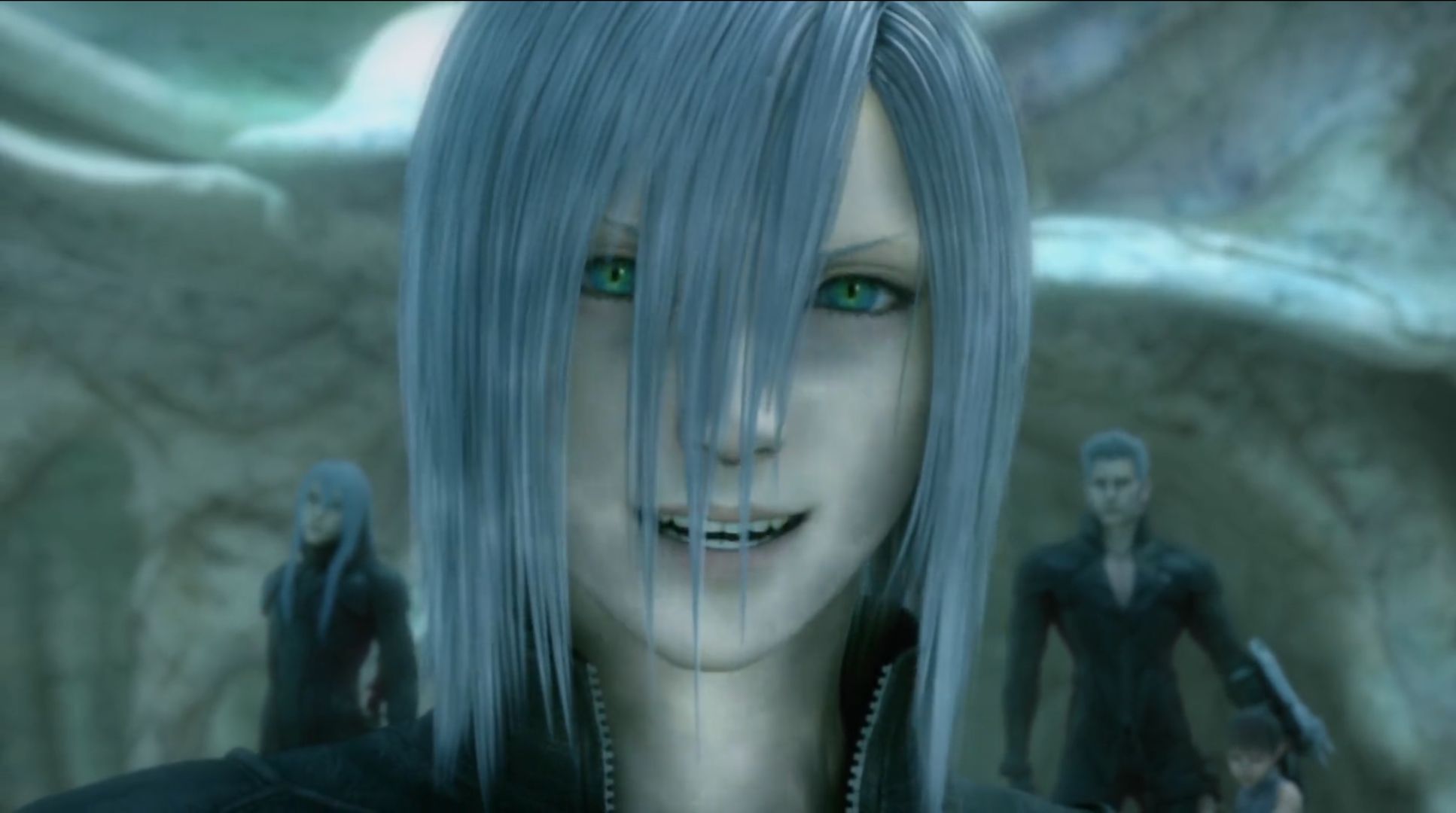
Dilly Dally Shilly Shally
As a story about letting go of the past that is actively beholden to what preceded it, Advent Children is a complicated piece of media. Nomura has stated the film was originally supposed to be only 20 minutes long and was extended to 100 minutes (and eventually two hours for the Complete edition) when fan interest indicated a preference toward a feature film. The padding does tend to show, making it an incredibly busy movie interspersed with more than a few moments where very little happens.
There are plenty of beautifully rendered setpieces and exhilarating fights, but to sum up the movie’s first hour, it’s mostly Cloud brooding, villains soliloquizing, random children crying, and the Turks Reno and Rude doing a sort of anime Abbott and Costello routine. Aside from Cloud and Tifa, the majority of FFVII’s main cast don’t show up til halfway through the movie, and only clock about five minutes of screentime. Then there’s a giant dragon to fight, a freeway motorcycle chase, and Sephiroth’s ghost shows up to traumatize Cloud some more.
I’ve watched this movie dozens of times over the last decade and a half, but up until this week, I would’ve told you that Advent Children is a stylish film with lots to show and not much to say. I was going to say that it’s basically a two-hour cutscene that’s largest impact was setting the standard for Remake’s graphic quality and shaping me into the kind of lesbian who really appreciates a full-leather outfit.
But my perspective on the movie gradually shifted while writing this. As I rewatched and put words to Google Doc, I slowly came to realise that underneath all the motorcycle twinks and shameless mobile phone product placements is a film that actually has something thought-provoking and beautiful to say.
Those Who Fight
In the time since Sephiroth was defeated, Cloud’s life has gotten as normal as it can get. He has a regular job. He’s formed a chosen family with Tifa, Marlene, and a young orphan boy named Denzel. He has friends who call him on his Panasonic FOMA P900iV™ cell phone and want to be a part of his life. But upon contracting Geostigma he begins to distance himself from everyone. He’s pushing people away, hiding his sickness, and won’t answer any of the calls he receives on his Panasonic FOMA P900iV™ cell phone. He struggles in silence.
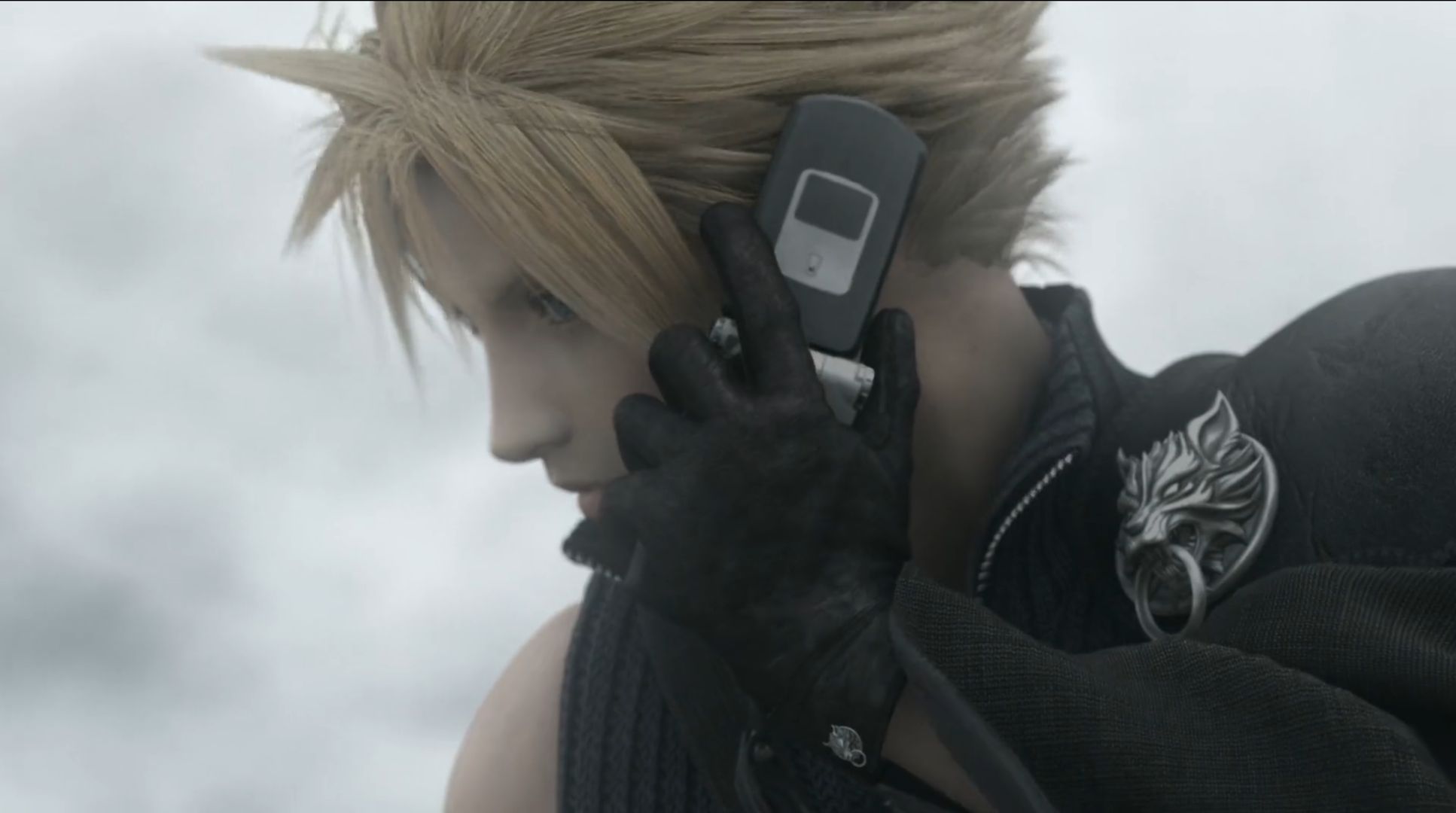
Advent Children really works to eschew the common story idea that the day is saved after the villain is defeated. Yes the world was kept from destruction, but just because you survived the thing that nearly killed you, that doesn’t mean you’re ok now. Cloud being alone for the majority of the film makes a lot more sense once you realise he’s punishing himself for his perceived failures to save Zack or Aerith. The only reason why his companions are absent for most of the movie is because he doesn’t know how to let them in. He feels unable to take care of himself, let alone others, and his survivor’s guilt takes the form of the violent shadows of Sephiroth and the disease that’s slowly killing him.
The Geostigma is a manifestation of the individual’s trauma as well as the planet’s. The events of FFVII left both Cloud and the planet Gaia wounded. When the planet’s lifestream fought back Meteor, it became tainted with Sephiroth’s corrupted cells which, upon coming into contact with a person’s lifestream, poison the body against itself. Most disproportionately affected by the disease are the many children orphaned when Midgar was destroyed, including Denzel. It’s the emotional pain of loss manifesting as deterioration of the body, and that’s not something you can fight against with a six-foot sword.
Advent Children is about the process of trauma recovery, the key to which isn’t letting go of the past, but accepting it and moving forward. The original Final Fantasy VII ends with a 500-year timeskip to a future when the planet and nature have healed from the destruction wrought by Sephiroth, Jenova, and the Shinra Company, but Advent Children makes it clear that healing and survival is not a passive action. You have to continue pushing onward, doing the work in spite of the pain, and accept love regardless of whether you believe you deserve it. By the time Cloud is dueling with a reborn Sephiroth, the members of Avalanche are ready to join their friend in battle, but choose not to, recognising Sephiroth as Cloud’s demon to slay. They are there if he needs them, but also acknowledge his need to be the one to give himself closure.
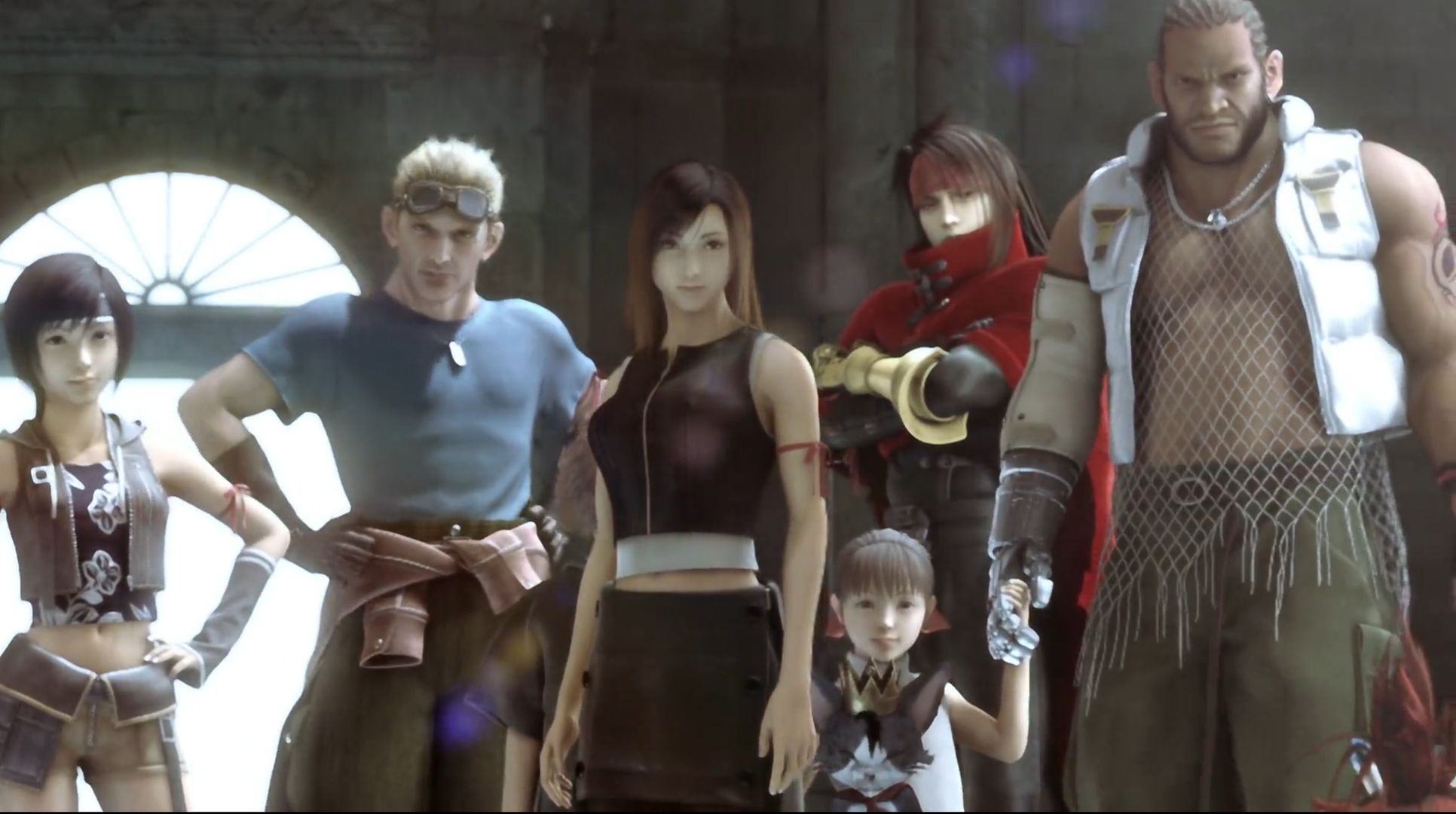
There is a lot of substantive symbolism to accompany Advent Children’s visual beauty, it’s just a lot harder to understand in a vacuum. I don’t know that my perspective of the movie would have shifted so greatly if I hadn’t recently played through the Final Fantasy VII Remake and watched a six-hour analysis series covering the original game.
Advent Children is very much the Donnie Darko of CGI anime follow-ups to critically acclaimed games. Both are gorgeous and messy with plots that only start to make coherent sense if you watch the extended version plus supplemental material, and both inspire a similar life cycle of viewership. They’re the kinds of films I would’ve described as “hella profound” as a teenager, grown embarrassed of and categorised as a guilty pleasure when first revisiting as an adult, and eventually come back around to develop a nuanced appreciation for.
“There’s Not One Thing I Don’t Cherish”
Toward the end of the film’s climactic duel, Sephiroth looms over Cloud, his dark wing spread, acting as the specter of Cloud’s trauma given form. He sneers at Cloud and says “Tell me what you cherish most. Will you give me the pleasure of taking it away?” Cloud shouts, “There’s not one thing I don’t cherish” before he executes his Omni-Slash Limit Break and rocks Sephiroth’s shit. What an incredibly badass way to say “I love things.”
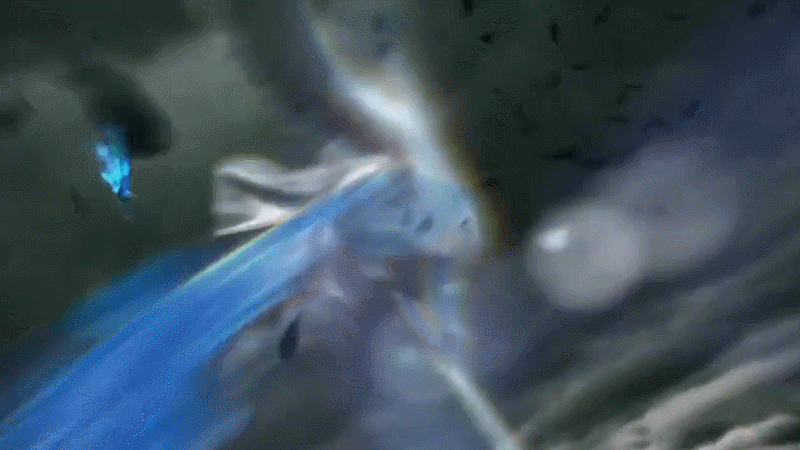
As my first real intro to a series that’s given me so much joy, Advent Children is something I deeply cherish. This wasn’t a Kingdom Hearts Disney-fied version of these characters and it wasn’t something I could only engage with for moments on my cousin’s save files. It was a piece of media that was mine and my first chance to experience what Final Fantasy could be for myself.
This series I love is messy and inconsistent. It’s concerned with saying something heartfelt at the same time it’s trying to look cool. Yes, it’s capable of being incredibly convoluted. I mean, I’ve watched the movie more than three times this week alone, and I still couldn’t tell you what Sephiroth’s goal actually was. (From what I gather, he wanted to use ghosts to turn the planet into his own personal spaceship, or something.) But Advent Children, like the rest of the franchise, is able to convey sincere emotion while also remaining steadfastly on its bullshit.
Who says you can’t make a good video game movie?
Final Fantasy VII: Advent Children is available to stream on Crackle and can be rented on Amazon Prime, YouTube, and Google Play
Chingy Nea is a writer, comedian, and critically acclaimed ex-girlfriend based out of Oakland and Los Angeles.
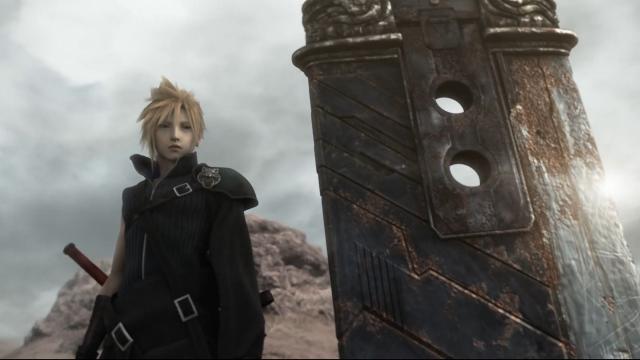
Leave a Reply